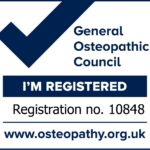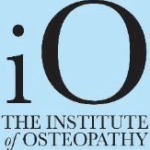Motor Neuron Disease (MND) is a progressive neurological disorder that affects the motor neurons—the nerve cells responsible for controlling voluntary muscles. As these neurons deteriorate and die, the ability to initiate and control muscle movement is lost, leading to severe physical disability. Famous examples of individuals with MND include the physicist Stephen Hawking and the baseball player Lou Gehrig, after whom the disease is often called Lou Gehrig’s disease in the United States.
Symptoms and Progression of MND
The symptoms of MND vary from person to person but typically include:
- Muscle weakness and atrophy
- Difficulty speaking, swallowing, and breathing
- Spasticity and muscle cramps
- Cognitive changes in some cases
The progression of the disease is usually rapid, and it eventually leads to significant physical impairment and dependency on caregivers. The emotional and psychological toll on patients and their families can be profound.
How Osteopathy Can Help MND Patients
Osteopathy is a type of complementary therapy that emphasizes the physical manipulation of the body’s muscle tissue and bones. While it cannot cure MND, Osteopathy can play a significant role in managing the symptoms and improving the quality of life for those affected by the disease. Here’s how:
Physical Benefits of Osteopathy
- Pain Management:
- Osteopathic treatments can help alleviate muscle and joint pain, which are common in MND patients due to muscle weakness and spasticity. Techniques such as gentle stretching, massage, and joint mobilization can reduce discomfort and improve mobility.
- Muscle Function and Flexibility:
- Regular osteopathic interventions can help maintain muscle function and flexibility for as long as possible. This is achieved through techniques that promote blood flow, reduce stiffness, and prevent contractures (permanent shortening of muscles or tendons).
- Respiratory Support:
- As MND progresses, respiratory muscles weaken, leading to breathing difficulties. Osteopathic techniques that focus on the chest and diaphragm can help enhance respiratory function, ease breathing, and reduce the risk of respiratory complications.
- Swallowing and Speech Assistance:
- For those experiencing difficulties with swallowing and speech, osteopaths can work on the muscles and tissues around the neck and throat to improve function and coordination.
Emotional and Psychological Benefits of Osteopathy
- Stress and Anxiety Reduction:
- The holistic approach of Osteopathy can contribute significantly to reducing stress and anxiety. The relaxation techniques used in Osteopathic treatments can help calm the nervous system, promoting a sense of well-being and reducing psychological distress.
- Improving Sleep Quality:
- Better management of pain and discomfort through Osteopathy can lead to improved sleep quality. Adequate rest is crucial for emotional health and resilience, particularly in individuals with chronic illnesses.
- Enhanced Quality of Life:
- By addressing physical symptoms and promoting relaxation, Osteopathy can enhance overall quality of life. Patients often report feeling more in control of their bodies and more optimistic about managing their condition.
- Supportive Care:
- Osteopaths often take a patient-centered approach, offering a compassionate ear and support. This therapeutic relationship can provide emotional comfort and reassurance, helping patients feel less isolated in their journey.
Recent Findings Supporting Osteopathy in MND Care
Recent studies and clinical experiences have shed light on the efficacy of osteopathy in managing MND symptoms:
- A 2022 study in the “Journal of Bodywork and Movement Therapies” found that manual therapy, including Osteopathic techniques, significantly improved mobility and reduced pain in patients with neurodegenerative conditions, including MND. The study highlighted the importance of individualized care plans tailored to each patient’s needs.
- A 2023 review published in “Clinical Rehabilitation” confirmed that physical therapy interventions incorporating Osteopathic principles can enhance the quality of life for patients with progressive neurological diseases. The review emphasized that these interventions help maintain muscle function, reduce spasticity, and improve overall physical well-being.
- Research in the “British Journal of Pain” (2023) documented the effectiveness of manual therapies in chronic pain management, a common issue for MND patients. The findings suggest that Osteopathic techniques can be a valuable part of a comprehensive pain management strategy, helping to alleviate discomfort and improve patients’ daily functioning.
- A 2023 pilot study in “NeuroRehabilitation” examined the effects of Osteopathic manipulative treatment (OMT) on respiratory function in MND patients. The results showed promising improvements in breathing capacity and reduced respiratory distress, indicating that OMT could be a beneficial complementary therapy in managing respiratory complications of MND.
Conclusion
Motor Neuron Disease presents a formidable challenge, affecting both physical and emotional well-being. While there is no cure, Osteopathy offers a valuable, supportive role in managing symptoms and improving quality of life. Through pain relief, enhanced mobility, respiratory support, and emotional care, Osteopathy can help MND patients navigate their condition with greater comfort and dignity. If you or a loved one is dealing with MND, consulting with an experienced osteopath may provide much-needed relief and support on this challenging journey.





